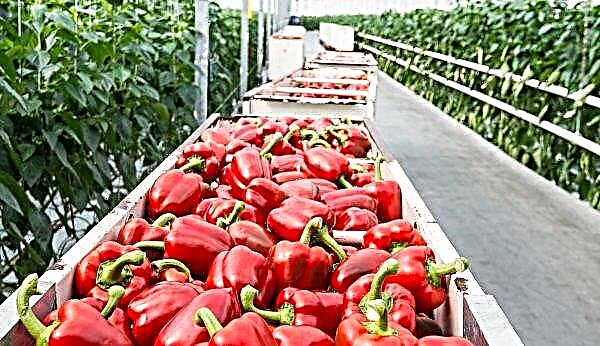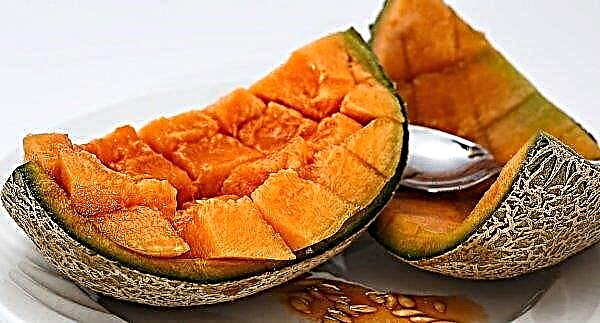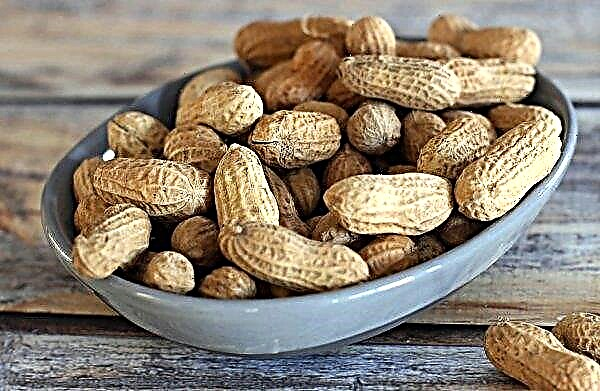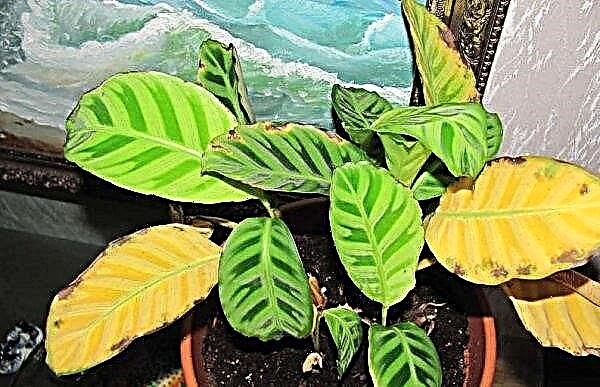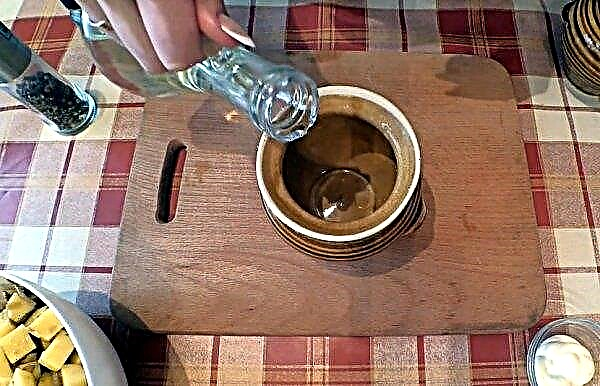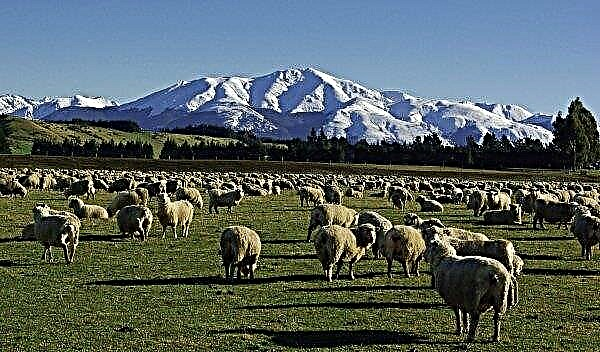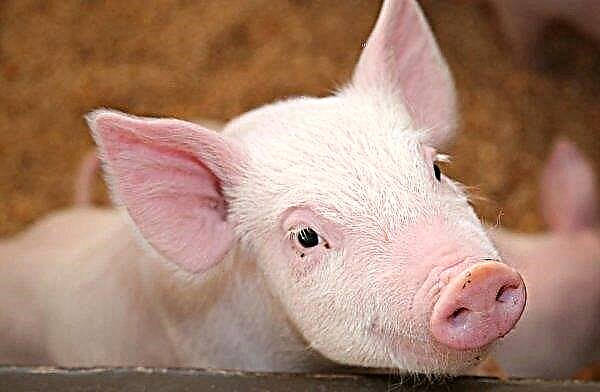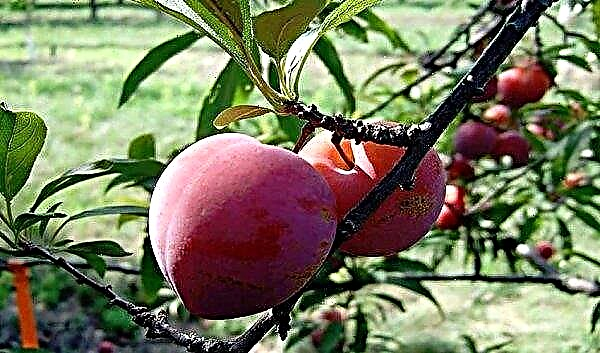In the spring and early summer, when the body is in dire need of vitamins, early varieties of vegetables are very helpful. One of them is Nozomi F1 cabbage, fruitful, unpretentious and tasty. Below we consider all the features of the variety and give recommendations for its cultivation.
The history of the origin of the Nozomi variety
Nozomi has French-Japanese descent. The Japanese company Sakata, which has a century of experience in developing new vegetable varieties and seed production, has offices throughout Europe.
In the late 1990s. she opened her breeding station in France. There, the cabbage hybrid of the first generation Nozomi F1 was bred. Since 2007, this variety has been included in the Russian State Register of Vegetable Crops. Its cultivation is recommended in the North Caucasus region, but practiced in other regions.
Did you know? All over the world there are only about 100 cabbage species, which are divided into 3 varieties: leafy, colored and cabbage.
Description and characteristics of the variety
Nozomi white cabbage is a hybrid of ultra-early ripening. Seedlings grow from seeds in about a month. Then, 55–58 days after planting, heads of cabbage ripen in the ground. So, the seeds sown in March at the end of May will give a friendly harvest. Seedlings are not afraid of freezing, suitable for open and protected ground.
Seedlings are not afraid of freezing, suitable for open and protected ground.
The leaf outlet is horizontal or slightly elevated. The leaves are medium-sized, rounded in shape, with wavy edges. The surface is glossy, bubbly, with a light wax coating. Heads are spherical, compact, very dense. Score for density - 4.5 points. Weight - 1–1.8 kg. The inner and outer stitches are short. The leaves are very juicy and delicious. The color of the outer leaves is green, in the context - white with a yellow tint.
The color of the outer leaves is green, in the context - white with a yellow tint.
The variety produces high yields of 315 kg / ha, about 10 kg / m². At the same time, 90% of the collected heads of cabbage have a presentation. Cabbage heads can remain on the field for quite a while without cracking. They are well transported. But for long-term storage, the variety is not intended. The vegetable is suitable for making fresh salads, stews and soups. It’s not good for pickles.
Did you know? From a botanical point of view, the head of cabbage is a huge kidney, which was formed on a kind of stalk-stalk.
Advantages and disadvantages
From the reviews of gardeners it follows that the number of advantages of the variety exceeds the number of disadvantages.
- The pluses include:
- high productivity;
- unpretentiousness;
- fast ripening, which is suitable for cold regions;
- friendly ripening;
- cold resistance;
- immunity to alternariosis and bacterial rot;
- great taste;
- high density forks;
- resistance to cracking;
- marketable condition;
- transportability.
- Minuses:
- the inability of the cabbage heads to be stored for a long time.
Rules for landing in open ground
The cabbage plot must be selected in advance and in the beginning of its preparation to begin.
Requirements for the place:
- sunny, but without drafts;
- soil - light fertile loam with neutral acidity;
- good predecessors - cereals, legumes, pumpkin, cucumbers, root crops and onions.
 In autumn, the selected area is deeply dug along with organic fertilizer, for example, humus or compost. And in the spring you need to fertilize the earth with mineral phosphorus-potash additives.
In autumn, the selected area is deeply dug along with organic fertilizer, for example, humus or compost. And in the spring you need to fertilize the earth with mineral phosphorus-potash additives.You can determine the appropriate time for planting seedlings in the soil by night air temperature. If it does not stably fall below + 10 ° С, it means that the earth is already quite warm, and it is time to plant seedlings. Depending on the region, this may be the end of April, the beginning or the middle of May.
Seedlings are grown from seeds in advance in indoor or greenhouse conditions. By the time of landing at a permanent place, the sprouts must be sufficiently strong and formed. Seedlings are ready for transplanting if they have reached 15–20 cm in height and have 7–8 leaves.
Seedlings are ready for transplanting if they have reached 15–20 cm in height and have 7–8 leaves.Landing technology:
- suitable time is morning, evening or cloudy day;
- scheme - 50 × 50 cm;
- depth of pits - 15–20 cm;
- pour some organic and mineral fertilizers (humus, ammonium nitrate, superphosphate, potassium salt) on the bottom of each well if the earth is infertile or has not been fertilized in advance;
- add river sand if the soil is not loose enough;
- deepen plants on cotyledon leaves, sprinkle the roots with earth and slightly compact;
- pour plenty of settled water.
Important! It is not advised to plant cabbage annually in one place. Mycotoxins secrete its roots, which over time will inhibit its growth.
Basic rules for plant care
Nozomi - unpretentious grade. This is one of the advantages that made the hybrid popular. It’s not difficult to take care of him. Most of the effort will be required to water the plants.
Watering
Young seedlings with a small root system cost moderate watering. As it grows, so does its need for water. Adult plants are watered frequently and plentifully. Watering frequency - about 3 times a week (after 2-3 days). Under each bush you need to pour at least 2-3 liters of water so that the earth is wet to a depth of 50 cm.
Under each bush you need to pour at least 2-3 liters of water so that the earth is wet to a depth of 50 cm.
Cabbage especially needs moisture when it is hot and when heads are tied. In rainy times, watering is reduced or stopped. 2 weeks before cutting heads, cabbage is watered less often or completely stopped. Water for irrigation should be defended. The best time for water treatments is evening or morning.
Important! With insufficient watering, loose heads are formed with incomplete leaves.
Top dressing
The introduction of nutritional supplements is combined with irrigation. This contributes to the development of beautiful and tasty heads of cabbage. Early cabbage is fed 2-3 times per season:
- 2 weeks after transplanting, the seedlings are watered with an aqueous solution of mullein (1: 7) or bird droppings (1: 7), 1 liter under a bush, in case of pale leaves, you need to add urea (15 g / 10 l);
- when heads are tied, cabbage is reinforced with a slightly changed composition: a solution of mullein (1: 5) or chicken droppings (1:10), adding wood ash (2 tbsp. per 10 l of solution);
- after 20 days, watered again with an organic solution without ash.
Video: Feeding cabbage
Loosening and weeding
After each water treatment, including rain, it is necessary to loosen the earth to a depth of 5 cm. Thus, the dry crust is destroyed and air access to the roots is restored.
Simultaneously with loosening, weeding is also carried out. It is necessary to remove weed grass along with the roots, as it often becomes a breeding ground for infections and insect larvae. If you mulch the soil with peat (5 cm), then weeding and loosening will not be necessary. Mulch retains moisture in the ground, prevents the formation of a dry crust and prevents the growth of weeds.
Experienced gardeners are also advised to cultivate cabbage plants.. Due to this, new roots are formed in seedlings, which serve as additional nutrition channels.
Plant protection
Nozomi cabbage does not suffer from bacterial rot and alternariosis. But due to poor care, she can get sick with fungal diseases such as keel, blackleg and peronosporosis (downy mildew). For the fight and prevention, Bordeaux fluid (or other copper-containing products), lime mortar, biofungicides (Fitosporin, Trichodermin) are used.
Of the pests, cabbage moths, butterfly whites and their caterpillars, scoop and cruciferous flea are threatening cabbage plantings.
To rid them of plants, they are processed:
- folk remedies (ash and soap solution, tinctures of wormwood, dandelion or tobacco root, pollination with ash or tobacco dust);
- chemical insecticides (Kinmix);
- planted next to frightening neighbors (marigolds, carrots, dill, celery, calendula).
Harvesting and storage
Dense ripened forks are harvested in late May or early June (in different regions differently). Specialists know that early cabbage can produce two crops. For this, the head of cabbage is carefully cut, leaving 6-8 lower leaves on the bush.
Specialists know that early cabbage can produce two crops. For this, the head of cabbage is carefully cut, leaving 6-8 lower leaves on the bush.
Top dressing with mullein and frequent watering stimulate the formation of a new fork, which, with proper care, will grow full, large and juicy. Like other early varieties, Nozomi cabbage cannot be stored for long. It is not intended for harvesting for the winter, so immediately after cleaning it must be sold on the market or used for food.
Gardeners with experience growing cabbage speak well of Nozomi. It is unpretentious to the soil and care, productive and tasty. It can be grown both for your own needs and for sale.

